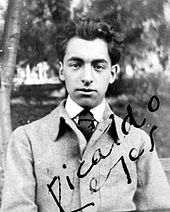
I am not an expert on the works of the late Chilean poet Pablo Neruda. He is regarded by some as one of the greatest Latin American Romantic poets of the 20th Century. An insightful commentary can be found in Forest Gander, whose critically acclaimed translations of the Chilean Nobel Laureate appear in The Essential Neruda. Selected Poems. 2004.
My own view is that a great deal of myth mongering surrounding his name due to his political beliefs and sudden death just after the Pinochet coup, may contribute considerably to his present fame.
Certain writings from the late Julieta Gomez Paz, an emiminent Argentinean eassayist, feminist critic and poet in her own right, argue that in much of Neruda’s love poems, the female role is depicted more as an object than a personality. In other words an archaic machisimo attitude is very much present in his works. An opinion that i am not altogether unsympathetic towards.(Robin Ouzman Hislop)
[tubepress mode=”tag” tagValue=”Pablo Neruda Poet Translation” resultsPerPage=”24″ resultCountCap=”96″ orderBy=”relevance” perPageSort=”relevance” ]
robin@artvilla.com
PoetryLifeTimes
Poetry Life & Times
editor@artvilla.com
www.artvilla.com
Artvilla.com
 Robin Ouzman Hislop
Robin Ouzman Hislop
75 at 75 92Y Poetry
92Y Unterberg Poetry Center’s 75th anniversary and beyond –
robin@artvilla.com
PoetryLifeTimes
Poetry Life & Times
editor@artvilla.com
www.artvilla.com
Artvilla.com
Core. A Sonnet by Robin Ouzman Hislop.

This tumble down day of tears and clay.
I do not stand in awe, at the world’s throng
As I gaze across black hills rolling grey
Turbulent clouds on the darkening land
Reaching the peninsula of my eye
Its sudden scene, its solitary strand,
My thoughts of time, existence, shadow
Robin Ouzman Hislop Editor of the 12 year running on line monthly poetry journal Poetry Life & Times. (See also its Wikipedia entry at Poetry Life and Times). He has made many appearances over the last years in the quarterly journals Canadian Zen Haiku, including In the Spotlight Winter 2010 & Sonnetto Poesia. Previously published in international magazines, his recent publications include Voices without Borders Volume 1 (USA), Cold Mountain Review, Appalachian University N Carolina, Post Hoc installed at Bank Street Arts Centre, Sheffield (UK), Uroborus Journal, 2011-2012 (Sheffield, UK), The Poetic Bond II & 111, available at The Poetic Bond and Phoenix Rising from the Ashes a recently published Anthology of Sonnets: Phoenix Rising from the Ashes. He has recently completed a volume of poetry, The World at Large, for future publication. He is currently resident in Spain engaged in poetry translation projects.
robin@artvilla.com
PoetryLifeTimes
Poetry Life & Times
editor@artvilla.com
www.artvilla.com
Artvilla.com
Sunset and My Life with the Wave Two Video Poems by Octavio Paz Translated from Spanish
Mexican poet, essayist, and political thinker. His works reflect many influences, including Marxism, surrealism, and Aztec mythology. El laberinto de la soledad/The Labyrinth of Solitude (1950), the book which brought him to world attention, explores Mexico’s heritage. His long poem Piedra del sol/Sun Stone (1957) uses contrasting images, centring on the Aztec Calendar Stone (representing the Aztec universe), to symbolize the loneliness of individuals and their search for union with others. He was awarded the Nobel Prize for Literature in 1990.
robin@artvilla.com
PoetryLifeTimes
Poetry Life & Times
editor@artvilla.com
www.artvilla.com
Artvilla.com



























